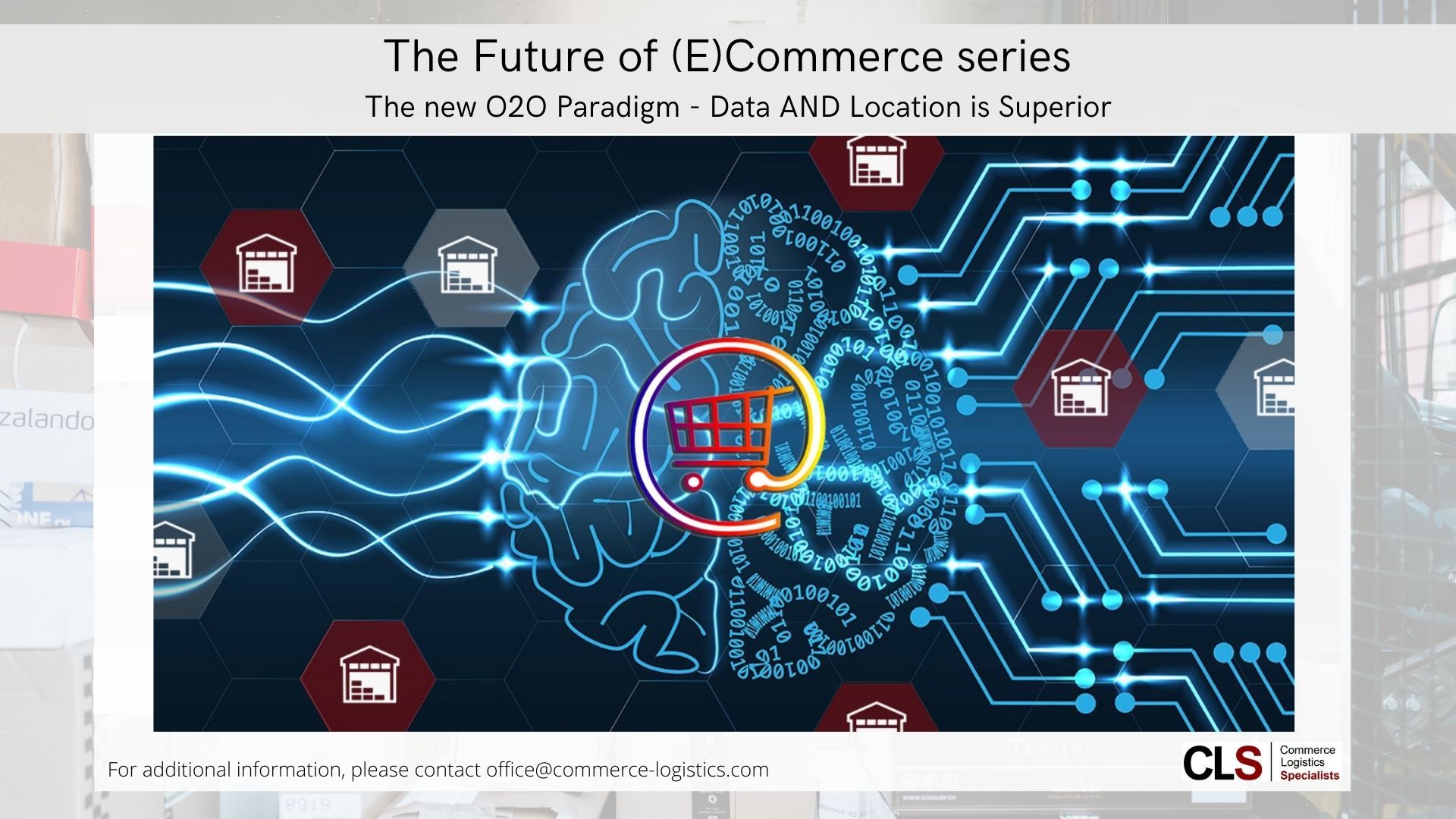THE FUTURE OF (E)COMMERCE SERIES / PART 4: A second chance for stationary retail

𝗘𝘅𝘁𝗿𝗮-𝗹𝗼𝗴𝗶𝘀𝘁𝗶𝗰𝘀 𝗿𝗲𝗾𝘂𝗶𝗿𝗲𝘀 𝗻𝗲𝘄 𝗹𝗼𝗰𝗮𝘁𝗶𝗼𝗻𝘀, 𝗮𝗻𝗱 𝘁𝗵𝗶𝘀 𝘁𝗶𝗺𝗲 𝘀𝘁𝗮𝘁𝗶𝗼𝗻𝗮𝗿𝘆 𝗿𝗲𝘁𝗮𝗶𝗹 𝗶𝘀 – 𝘁𝗵𝗲𝗼𝗿𝗲𝘁𝗶𝗰𝗮𝗹𝗹𝘆 – 𝘄𝗲𝗹𝗹 𝗽𝗼𝘀𝗶𝘁𝗶𝗼𝗻𝗲𝗱
Customer #deliveryexpectations are changing. Although the leading #ecommerce last-mile #deliverymodel will continue to dominate, namely next-day delivery as perfected by #Amazon „Prime“ and which is now regarded as standard by consumers in many EU countries, we are also seeing significant growth in same-day delivery (even within 60 – 90 minutes) driven by customer expectations in #fooddelivery.
𝗔 𝗿𝗮𝗽𝗶𝗱𝗹𝘆 𝗴𝗿𝗼𝘄𝗶𝗻𝗴 𝗽𝗼𝗿𝘁𝗶𝗼𝗻 𝗼𝗳 𝘁𝗵𝗲 𝗺𝗮𝗿𝗸𝗲𝘁 𝗶𝘀 𝗿𝗲𝘀𝗽𝗼𝗻𝗱𝗶𝗻𝗴 𝘁𝗼 𝘀𝗮𝗺𝗲-𝗱𝗮𝘆 𝗱𝗲𝗹𝗶𝘃𝗲𝗿𝘆 𝗲𝘅𝗽𝗲𝗰𝘁𝗮𝘁𝗶𝗼𝗻𝘀
The same-day delivery logistics model has already secured a notable market share. This model was already popular in China but has only grown significantly in the West following the #pandemic and associated #lockdown.
Demand for same-day delivery focuses on everyday consumer products such as groceries, cosmetics, and pet supplies. The potential ecommerce volume focuses on 4,000 – 15,000 everyday items usually held in stock by local brick-and-mortar #retailers. Consequently, with the necessary #logisticsinfrastructure, same-day delivery is possible at very competitive costs.
𝗧𝗵𝗲 𝗻𝗲𝘄 𝗽𝗮𝗿𝗮𝗱𝗶𝗴𝗺: 𝗙𝗿𝗼𝗺 „𝗗𝗮𝘁𝗮 𝗶𝘀 𝗞𝗶𝗻𝗴” 𝘁𝗼 “𝗗𝗮𝘁𝗮 𝗔𝗡𝗗 𝗟𝗼𝗰𝗮𝘁𝗶𝗼𝗻 𝗶𝘀 𝗦𝘂𝗽𝗲𝗿𝗶𝗼𝗿”
The new delivery logistics model is based on a tightly meshed network of micro-hubs, i.e., retail outlets, which store a basic range of goods, bundle them cost-effectively to meet orders, and transfer them to a last-mile delivery infrastructure – all supported and controlled by #data.
To date, the predominant delivery model has been based on large #logisticslocations sited in less expensive, peripheral areas and managed by data. Now #marketplaces will need to invest massively in urban locations if they are to respond to new customer expectations.
Urban locations are rare and expensive, giving stationary retail a major advantage. The race is on, and the question is:
· Can marketplaces establish urban locations quickly enough to compete, and
· Can brick-and-mortar retailers extend their data expertise in intra-logistics to manage existing third-party last-mile delivery services and build up the necessary ecommerce expertise in #customerservice?
#Walmart has shown that it is possible for brick-and-mortar retailers to compete successfully in this new environment. Both marketplaces and retailers will need to make a significant effort to remain competitive while fulfilling new customer expectations.
#retail #logistics #growth #environment #network #share #changes #update #CLS #TheFutureofEcommerce
Click here for the LinkedIn-Article.

Walter Trezek
Document Exchange Network GmbH

